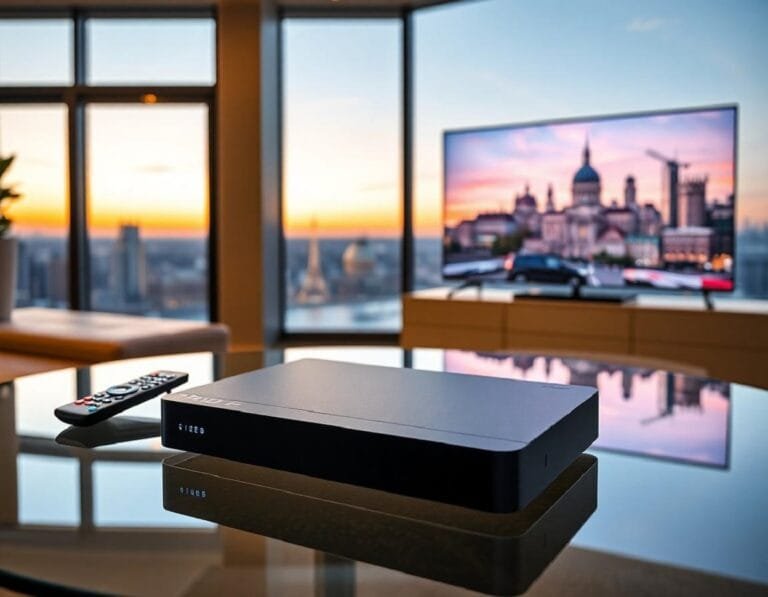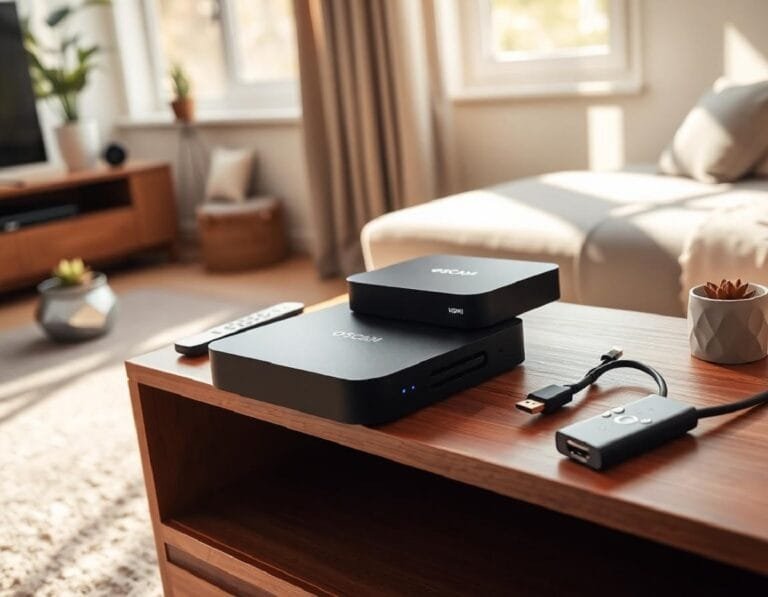How to Load ICAM OSCam DVBAPI: Expert Tips for Trouble-Free Setup

Setting up ICAM OSCam DVBAPI can feel overwhelming, especially with so many tiny steps and files to manage. If you’re an enthusiast running Enigma2 on a Vu+ receiver or other Linux-based box, you know the headaches of tough manuals, finicky configs, or strange channel lists that won’t load right. But getting everything up and running doesn’t have to be a headache. This guide breaks down each step clearly so you can avoid the most common mistakes, load your config files the right way, and enjoy smooth viewing with less stress. If you want expert tips that skip the confusion, you’re in the right place.
Preparing Your Receiver and Environment for ICAM OSCam DVBAPI
Setting yourself up for a smooth ICAM OSCam DVBAPI experience starts with the right foundation. The success of your setup isn’t just about the software—it’s about picking the best hardware, running modern firmware, and having the proper tools at your fingertips. Whether this is your first upgrade or you’re tweaking a seasoned Enigma2 box, investing a few minutes in these steps can save hours of future headaches.
Essential Hardware and Firmware Compatibility
 Photo by David Brown
Photo by David Brown
Not every receiver on the market will run ICAM OSCam DVBAPI reliably. For the best results, stick with models and firmware that the OSCam community has widely tested and supported:
Recommended Enigma2 Receivers:
- Vu+ (Ultimo 4K, Duo 4K, Solo SE, Zero)
- Dreambox (DM920 UHD, DM525, DM900, older DM820 and DM7080 with updates)
- Gigablue (UE 4K, Trio 4K)
- Edision OS mini/mega/4K series
Modern Firmware Images You Should Consider:
- OpenPLi (simple, stable, always up-to-date for many devices)
- OpenATV (great plugin support, wide compatibility)
- VTI (optimized for Vu+ receivers, fast navigation)
- BlackHole and OpenBlackHole (slick for Dreambox and Vu+)
To keep ahead of errors and bugs, always check for current firmware images and updates at Enigma2.net. An outdated image or a forgotten security update can make even supported hardware act up, so a quick check before every setup is a smart move.
Getting the Right Tools: FTP, Telnet, and File Management
You’ll need more than a remote to get things running. Accessing the file system of your set-top box is key, and that’s where FTP clients and Telnet/SSH tools step in. FTP software lets you transfer OSCam binaries and configuration files from your computer to your receiver.
Popular Choices:
- WinSCP: Free and beginner-friendly, great for FTP/SFTP. Drag-and-drop file transfer with built-in editors. Gives you a quick way to tweak and upload config files.
- FileZilla: Fast and reliable, but less tailored to Enigma2’s structure.
- PuTTY: The industry standard for Windows Telnet and SSH. Lets you start and stop OSCam, check logs, and fix permissions with a few commands.
Each tool plays its part. FTP clients move files; Telnet/SSH clients help you control and troubleshoot your device. Setting up both tools before you start your ICAM OSCam journey will tip the odds in your favor for a smooth process.
Downloading the Correct OSCam Emulator Version
Trying to boot an incompatible version of OSCam is like fitting a square peg in a round hole—nothing works and you just get frustrated. Your receiver has either an ARM or MIPS processor, and you’ll need an ICAM-patched OSCam binary designed for your exact architecture.
How to choose and download the right binary:
- Find your receiver’s hardware type (look in the specs or system info).
- For ARM-based models (most modern Vu+ and 4K boxes), download the ARM version.
- For older MIPS devices (popular Dreambox and lower-end receivers), grab the MIPS binary.
For the freshest ICAM-patched releases, save yourself the guesswork by heading to the OScam-iCam_Emu Patch 2025 ipk & deb download page. This source keeps arm and mips binaries updated and clearly labeled. You can also check OScam Binaries for Enigma2 if you need alternatives or extra details.
Tip: Always download from reliable sources and match the binary with your box’s architecture and firmware version. Using a mismatched binary often leads to crashes or buggy channel lists.
Preparing your environment is more than just checking boxes. The right setup means less troubleshooting, more reliable viewing, and hours saved in the long run.
Step-by-Step: Installing and Configuring ICAM OSCam DVBAPI
Getting ICAM OSCam DVBAPI working starts with hands-on file management, permission tweaks, and special edits that make all the difference for DVBAPI and iCam. If you’re ready to roll up your sleeves, this section shows each step in clear terms—no guesswork, just reliable setup.
Transferring and Managing Configuration Files: Moving OSCam Files with FTP
Your receiver’s “brain” lives in a handful of files—oscam.conf, oscam.server, oscam.user, and oscam.dvbapi. Getting these files into place is the first real step, and FTP software is your best friend.
To keep your files safe and in the right spots, follow this approach:
- Open your FTP client (WinSCP, FileZilla, or another you trust). Not sure how FTP works? Here’s an easy overview of FTP basics.
- Connect to your receiver using its IP address and FTP login (often “root” with no password or “root”/“root”).
- Browse to
/etc/tuxbox/config/or for some receivers,/usr/keys/—these are the default folders for OSCam files. - Drag your config files (
oscam.conf,oscam.server,oscam.user, andoscam.dvbapi) from your computer into these folders.
Pro tips for smooth and safe transfers:
- Back up old config files by copying them to your PC before overwriting anything.
- Never rename or edit file extensions after copying.
- If a file won’t transfer, double-check that your receiver is in standby—not completely shut down.
If you run into issues along the way moving files, some tools like oscam-connection-manager can simplify OSCam config handling, especially if you juggle files across several devices.
Setting Permissions and Starting the Emulator
Permissions tell your box who can do what with each file. Get this right and everything works, but miss a setting and OSCam might refuse to run. Setting the right permissions can fix hidden problems.
Many receivers let you use Telnet or SSH to set permissions. Open up your terminal (with PuTTY or similar), log in, and then run:
- For configuration files:
chmod 644 /etc/tuxbox/config/oscam.* - For the emulator binary itself:
chmod 755 /usr/bin/oscam
Why these numbers? 644 means the system can read and write config files without security leaks. 755 gives execution rights to the emulator so it can actually start up. Stuck with permission errors? See the tips at Writing File Permissions Denied – OSCam for troubleshooting.
How to start (or restart) OSCam:
- On many Enigma2 boxes, use your remote to open the Softcam panel. Select OSCam and hit start.
- Alternatively, use SSH/Telnet:
/etc/init.d/softcam.oscam restart
Or, for OpenATV and some modern images:systemctl restart oscam.service
If you need a full walkthrough, some firmware forums like World of Satellite have examples for various images and problems.
Key Configuration for DVBAPI and iCam Function
Your configs hold the real magic for iCam. Editing these files sets up stream relay, ECM delay, and provider details—get them right and you’ll dodge hours of debugging later.
Focus on these changes:
- In
oscam.conf, enable stream relay for iCam:[dvbapi] enabled = 1 user = dvbapiclient au = 1 pmt_mode = 4Add or check this section to turn on stream relay:[streamrelay] stream_relay_enabled = 1Don’t forget to set a sensible ECM delay if you face slow channel switching:[emu] ecm_delay = 800 - In
oscam.server, match your provider’s details exactly, including CAID and Ident. Many misspell or swap numbers, leading to silent failures.
Commonly missed lines:
- No user named in
[dvbapi] - Wrong CAID or missing provider in
[reader] - Stream relay missing or set to
0
For support, see delay while change channel – OSCam or Streamrelay configuration tips. Step through configs slowly—every typo counts.
Importing iCam Channel Lists and Bouquets
The final touch is to make sure your channels and bouquets show up bright and clean on your receiver. You’ll need reliable channel lists to see the new services.
Most fans use Dreambox Edit or E-Channelizer to handle this job. Here’s how to bring in a fresh channel list:
- Launch Dreambox Edit or E-Channelizer on your PC.
- Connect to your receiver using the app’s built-in network wizard.
- Import your iCam-suited channel list (often a .tv or .xml file supplied by your provider or trusted source).
- Drag channels or entire bouquets where you want them—reorder, rename, or group as needed.
- Save and send the updated list back to your receiver.
If you want to merge imported lists with your DVB-T channels, Dreambox Edit’s guide details how to blend lists just right.
Take a last look on your receiver—your new channels should pop up in their bouquets. If something’s missing, rescan or resend from Dreambox Edit and reboot your box to refresh.
With these steps, you’re well on your way to a stable iCam OSCam DVBAPI setup—one built for clear signal and less stress.
Expert Troubleshooting and Proven Tips for a Smooth ICAM Setup
Tech can spoil the fun when things glitch, but with the right ICAM OSCam DVBAPI know-how, you can get back to smooth channel surfing. Troubleshooting isn’t just about fixing errors—it’s about understanding your setup, being ready, and knowing where to get help. The sections below will guide you through the most common hurdles so you can take control and keep your viewing experience frustration-free.
Diagnosing Common Errors and Log File Analysis
 Photo by Markus Spiske
Photo by Markus Spiske
Logs are a treasure map for troubleshooting: they tell the story behind every error, freeze, and slow channel change. To get started, you’ll need to know where to find your OSCam log files. They usually live in /var/log, /tmp, or a directory defined in your oscam.conf under the logfile setting.
To read and make sense of the logs:
- Open the log file with a text editor (WinSCP makes this easy) or use the command
cat /tmp/oscam.login SSH/Telnet. - Look for ECM (Entitlement Control Message) times: High or spiking ECM times cause slow channel switching and are the biggest clue to decryption delays.
- Watch for repeated “not found” or “no suitable reader” messages: These signal config errors, such as the wrong CAID or missing user account.
- Check signal entries: If you see entries like “no signal” or “tuner fail,” focus on your cables, dish, and LNB before blaming your OSCam setup.
Here’s a quick tip: comparing log snippets before and after changes helps you catch new mistakes—and quickly roll back if needed. For a deeper dive, review the OSCam iCam streamrelay issue page, which often features progress updates on patch compatibility and detailed user experiences (Implement streamrelay with icam support). For general log-in details and how to retrieve iCAM logs, check out this solid walk-through: How to retrieve iCAM logs.
Fixing Channel Freezes and Black Screens
Freezing video or black screens can feel like technical sabotage just when you’re ready to relax. These problems usually tie back to misconfiguration, server choice, or even local network hiccups.
Here’s a focused plan to fix unstable playback:
- Prioritize a reliable server: Test with a trusted OSCam server first. Unstable or overshared servers make every fix harder.
- Update and restart your emulator: Out-of-date emulators are a magnet for channel freezes. Running the newest ICAM-patched OSCam often solves hidden compatibility problems (Fixing Common OSCam iCam Setup Problems).
- Minimize network noise: A wired Ethernet connection beats Wi-Fi every time for streaming reliability.
- Use only one emulator: If you have multiple emulators running, they can conflict and cause lags or freezes (Screen and Sound Lags/Freezes).
- Reboot and soft-reset: A fresh restart is sometimes the fastest way to shake off frozen playback (Oscam-emu PV Channles Freezing). If the box keeps locking up, try a full reboot—not just restarting OSCam.
Pay special attention to configuration lines in your oscam.conf and oscam.dvbapi—incorrect CAID, reader, or missing stream relay options are top suspects for freezing video. Corrupted channel lists are rare but worth checking if you suspect a bad import.
When you fix these issues, watch your logs for ECM times dropping and errors disappearing. Smooth video and snappy channel changes tell you you’re winning.
Staying Up to Date: Updates, Security, and Community Support
Technology changes quickly, and ICAM OSCam is no exception. Running the latest versions prevents many problems before they even start. Updates often include security patches, new hardware support, and faster decoding.
Follow these best practices:
- Get updates from trusted sources: Stick with official or widely-used OSCam binaries. Regular releases and test builds are posted at respected forums such as World of Satellite. Avoid random internet downloads that might compromise security.
- Watch forums and communities: Skim active discussions at boards like OpenPLi and LinuxSat-Support—many problems get solved and new tips appear before they’re in any how-to article.
- Update your configs with each new release: Sometimes a change in OSCam requires a tweak in your configuration files. Reviews and guides (like updating entitlements via oscam) can help ease the process.
- Back up before updating: Always make a quick copy of your config files and working binaries before you upgrade. That way, you can undo mistakes without a total reset.
Staying current is as much about community as it is about code. Users share their fixes, test results, and setup walkthroughs—helping you avoid old mistakes and take advantage of new solutions.
A well-maintained setup powered by the latest updates, steady internet, and clear guidance from support forums keeps your ICAM system running comfortably for years to come.
Conclusion
Loading ICAM OSCam DVBAPI can feel like a puzzle at first, but steady steps and patience unlock a reliable setup. Trusted guides and a few proven strategies keep things running smoothly, from early hardware checks to careful backups and log reading. Every receiver and image is different, yet the recipe never changes: follow clear advice, keep software current, and listen to your logs.
Success with ICAM OSCam DVBAPI doesn’t just happen—it grows from careful choices and thoughtful fixes. Share your proud moments or clever fixes in the comments to help others shine. The strongest setups come from a community willing to swap stories and tips.
Thanks for following this guide and trusting your viewing experience to the power of persistence and good information. If you found a shortcut, solved a tricky error, or just want to show off your working setup, let others know. Your journey can spark ideas for the next update or guide.






